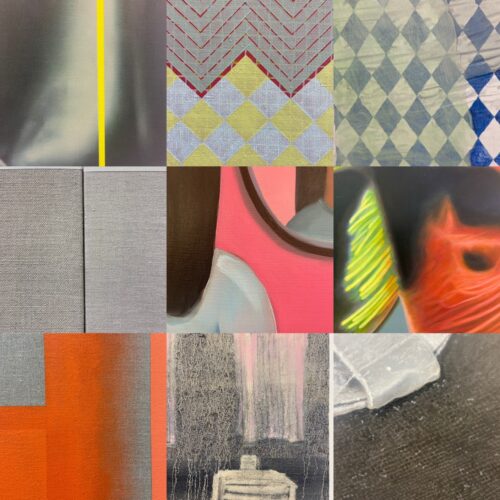
America after the Fall

America after the Fall: Painting in the 1930s, an exhibition at the Royal Academy is the subject for an Open College of the Arts study visit on the 25 March.
With the Wall Street crash of 1929 many people lost their jobs, homes, savings and investments. Economic conditions were so severe that, at its height, one in four Americans were unemployed. For many the American Dream of achieving success and prosperity had vanished.
To help relieve the situation President Franklin D. Roosevelt proposed the New Deal in which public money would be used to create jobs, improve infrastructure and help get people back to work.
Roosevelt recognised the importance of the arts, creating the Works Progress Administration (WPA) that employed artists of all persuasions, from photographers to musicians to actors and dancers. For painters there was a Mural and Easel painting division, with their work distributed around the country to schools, post offices and government buildings.
The art scene at the time divided itself into various factions from American realists and regionalists, to European inspired surrealist and abstract painters. The activities of the WPA brought together many artists, several of whom later became the Abstract Expressionists group. Artists such as Ashille Gorky, and Jackson Pollock benefitted from the programme and their early Picasso/Miro-inspired works are included in this Exhibition
At a time of great inequality and social unrest not all work was political. Realist painters such as Ben Shahn and Philip Guston responded to the economic conditions with figurative compositions. The precisionist painter Charles Sheeler painted Henry Ford’s gigantic River Rouge Plant while the ardent socialist Stuart Davis chose to paint decorative jazz inspired abstractions.
It is the American regionalists who provided the feel-good factor for the period, with Thomas Hart Benton leading the field with his rococo style realism and muscular mannerism based on Michelangelo and El Greco. He painted large-scale murals in the State buildings of Missouri and Indiana. These celebrated an American mythic landscape with a cast of characters from Huckleberry Finn to Jesse James “The dirty rotten coward, who shot Mr Howard, had laid poor Jessie in his grave”. In another scene Frankie is seen shooting Johnny – “He was her man and he was doing her wrong”.
The regionalist’s iconic painting of the period is undoubtedly ‘American Gothic’ 1930. In this famous picture a stern Midwestern farmer with a pitchfork seems to defend the honour of his rather plain daughter whilst behind him there is the gothic inspired window of a farmstead. These hard working, God fearing people were seen to be at the heart of all that is good in an America.
 Meanwhile in the city Edward Hopper, who thought that American scene painters caricatured America, painted pictures populated by the disaffected and lonely inhabitants of a hostile and uncaring city. The psychological effect of these paintings is in stark contrast to the sunlit propaganda of the regionalists.
Meanwhile in the city Edward Hopper, who thought that American scene painters caricatured America, painted pictures populated by the disaffected and lonely inhabitants of a hostile and uncaring city. The psychological effect of these paintings is in stark contrast to the sunlit propaganda of the regionalists.
In his ‘New York Movie’ 1939, Hopper depicts a bored usherette in a near empty theatre standing by the exit, illuminated by wall lamps and isolated in her own thoughts and anxieties.
As the Depression came to an end and economic stability returned, newer more fashionable art trends took centre stage. The competition between divergent artistic ideologies found in favour in the Abstract Expressionists and the regionalists and realists were relegated to the dustbowl of art history.
With the United States now entering a more protectionist period and trying to recover its industrial strengths, this exhibition ‘America after the Fall: Painting in the 1930s’ is a timely reminder of a similar troubled time in American history and a good introduction to the art of the period.
Image Credit: Grant Wood, American Gothic, 1930.
Edward Hopper, New York Movie, 1939.
To reserve your place please email enquiries@oca.ac.uk or alternatively to request a place on a study visit please click here and complete the form.
For study events that require a ticket, there is a non refundable fee of £10 to pay and your confirmation email will instruct you on how to do this.





